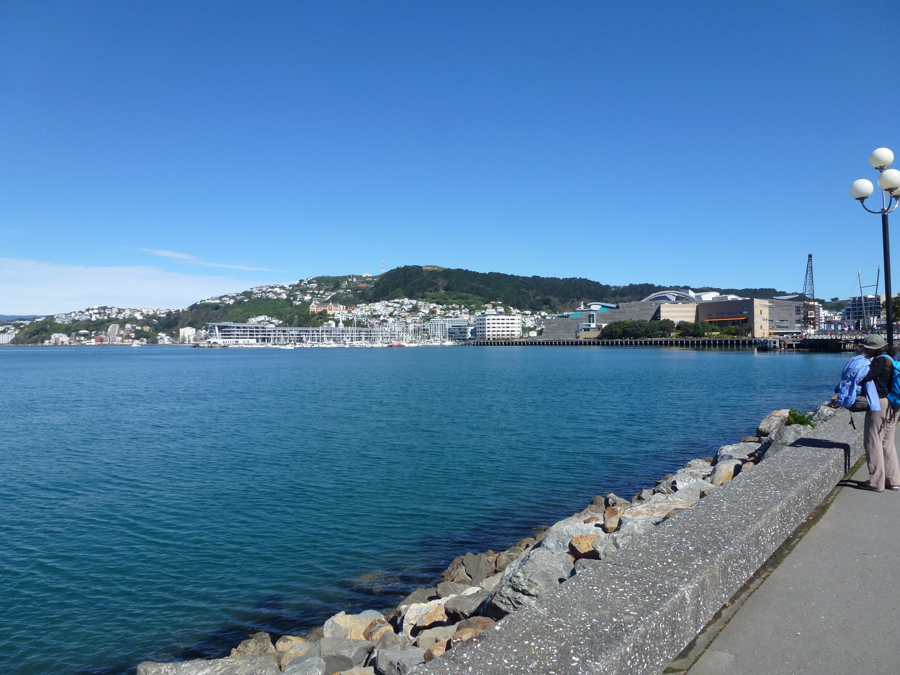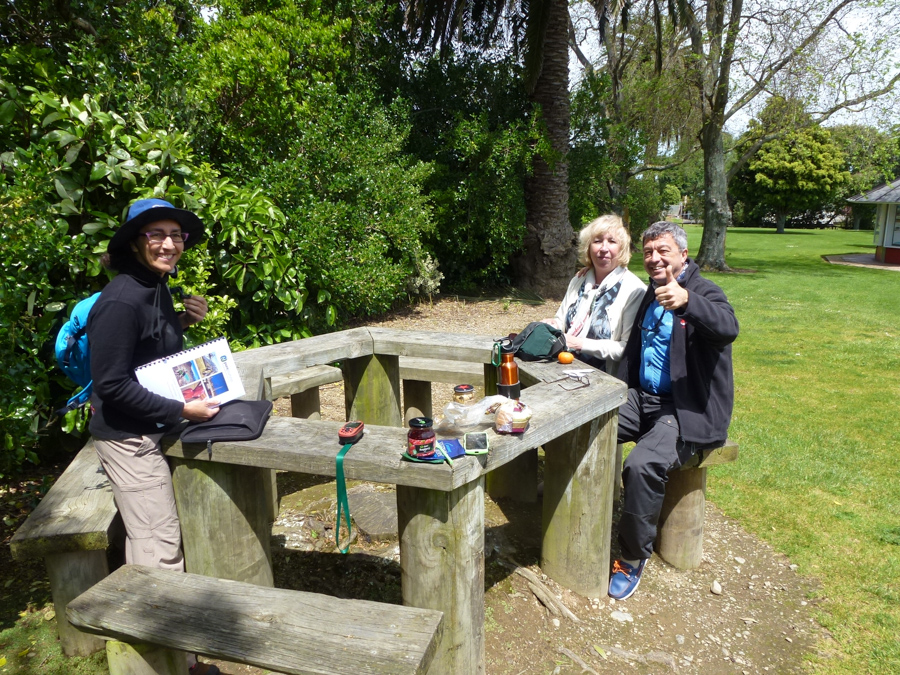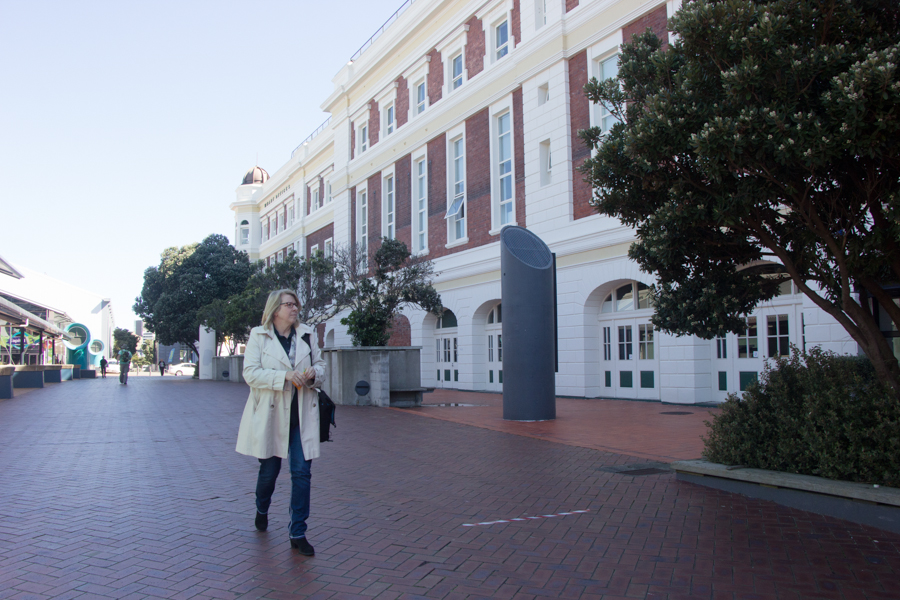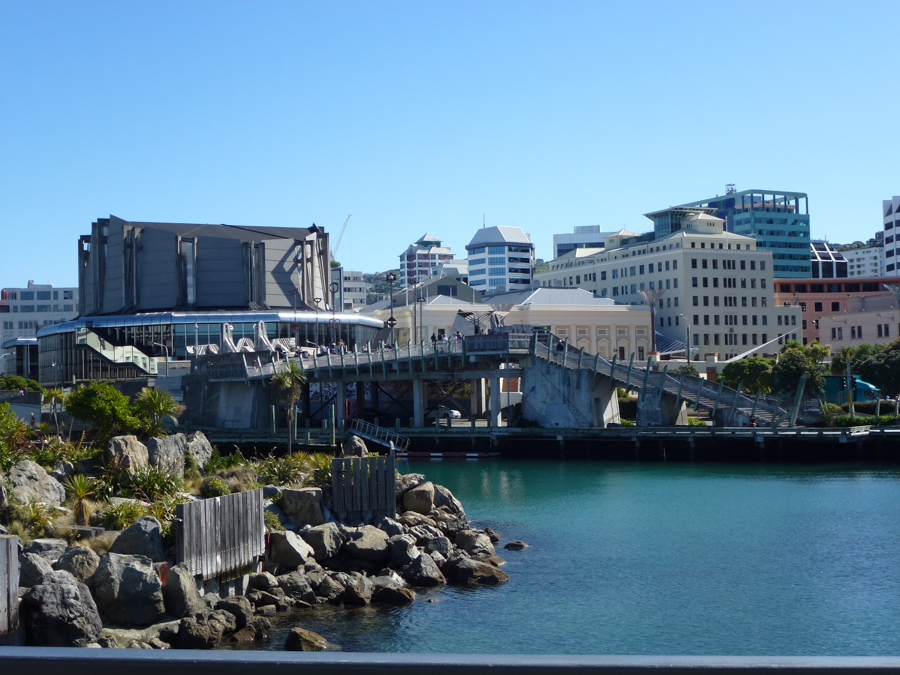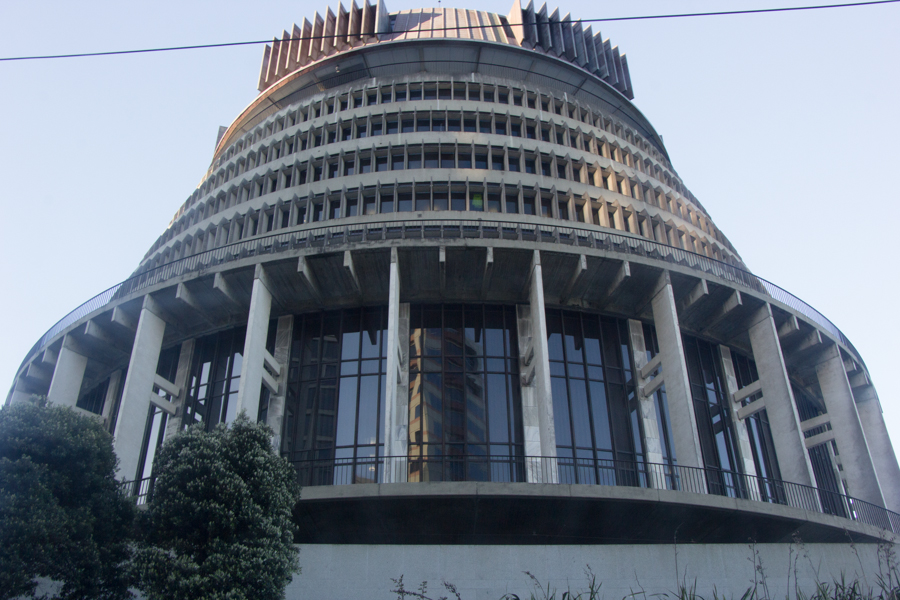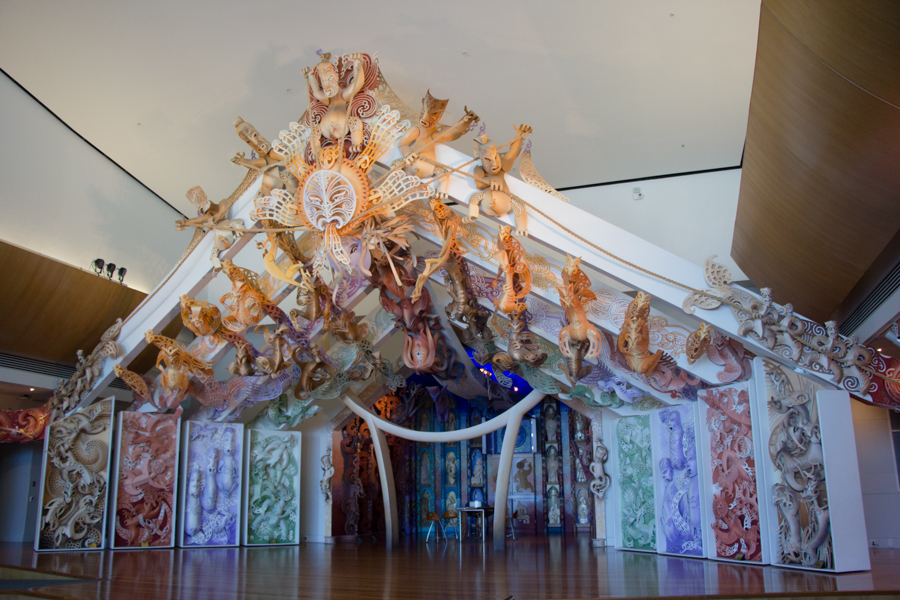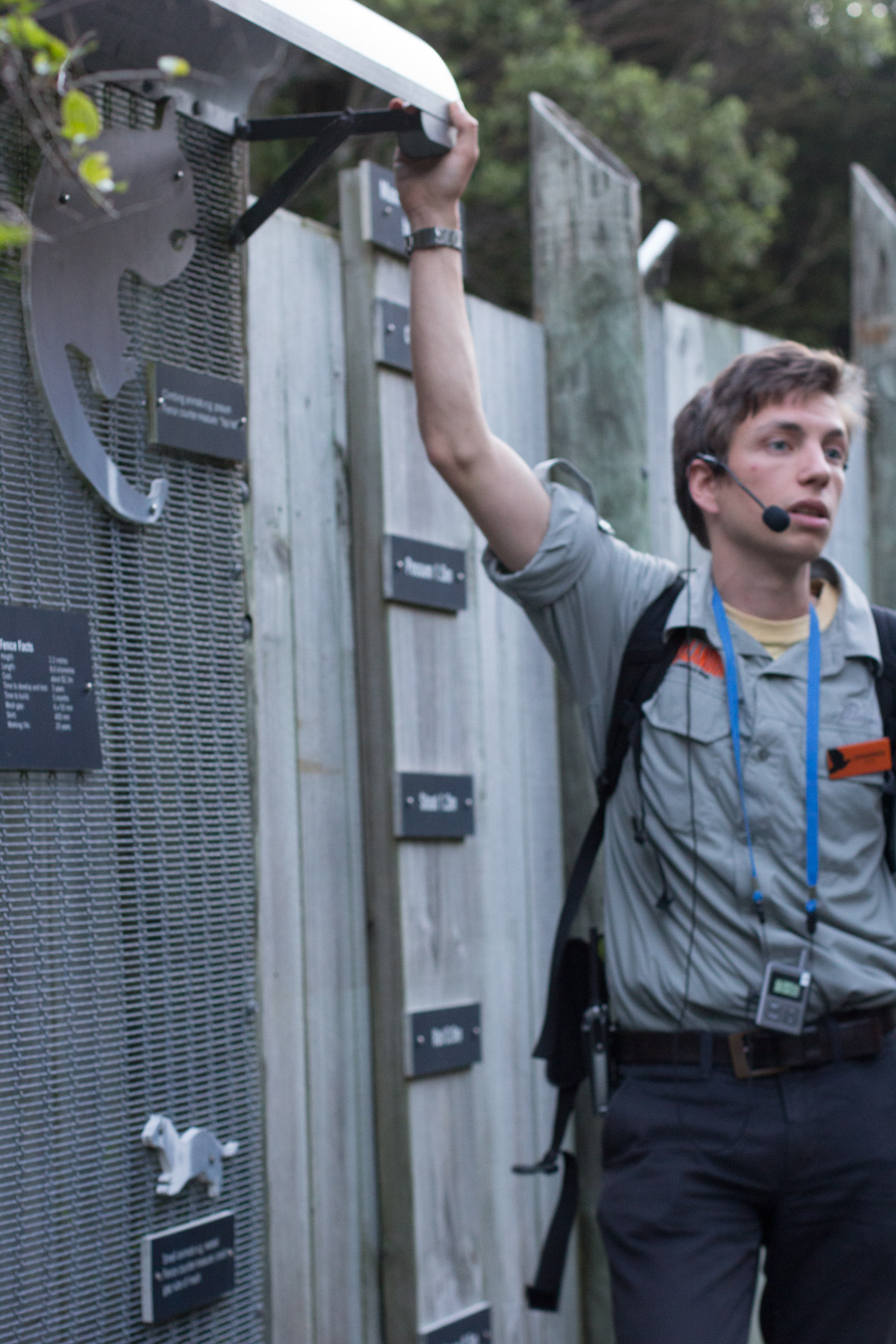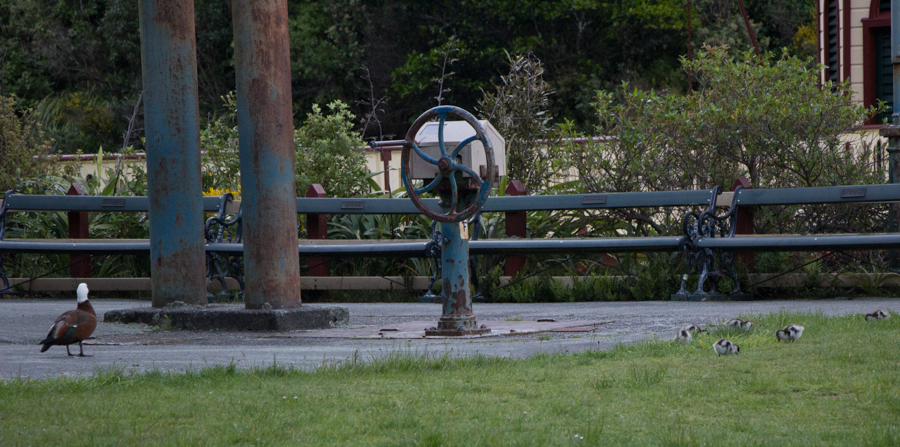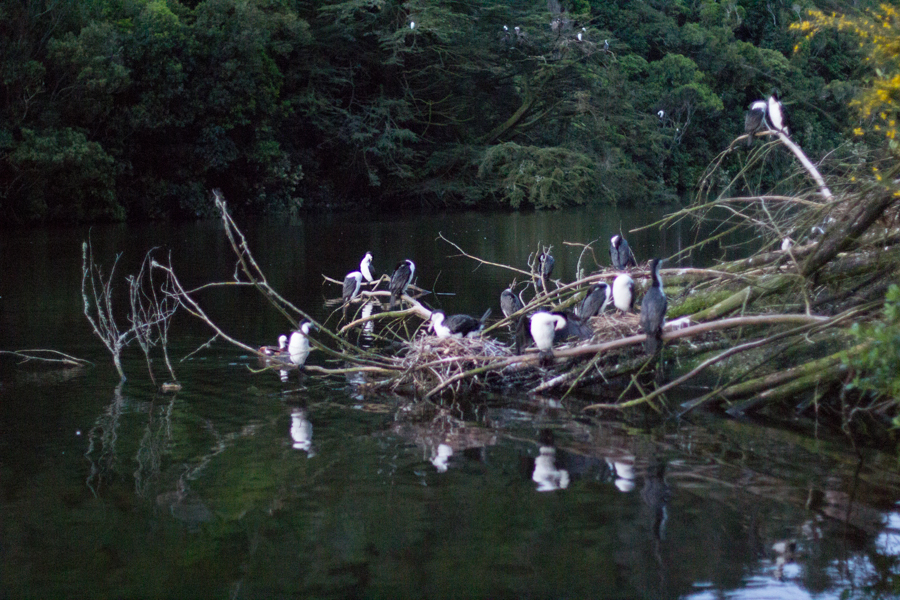Wellington
Tuesday 8 November, 2016
Wellington waterfront. Photo by Eric.
We came to New Zealand primarily to see geology and wildlife, but we had to fit in at least a short visit to the national capital. The biggest attraction here is Te Papa, the national museum of New Zealand. I also scheduled a tour of the Zealandia Wildlife Sanctuary. Photography was forbidden in the most unique exhibits at Te Papa, and most of the Zealandia tour was in the dark (to see the nocturnal creatures), so I will have to describe our Wellington tours primarily in text.
But first! We had to drive several hours south from Tongariro to get to Wellington at the south end of the North Island. We stopped at a little park by the side of the road in Levin. We were making our peanut butter and jelly sandwiches when we heard a little honk. It was Guy and Anne, our Belgian friends, again!
By now, we had become so close that we picnicked together, discussing our plans for Wellington, and Eric took a picture of Guy and Anne with me.Scenes from Wellington
Wellington Museum of City and Sea. Eric's picture the Michael Fowler Center. The New Zealand Parliament. A terrible photo taken from the window of a moving cab, but it's a unique and important sight.Wellington is a remarkably walkable city, with museums and office towers all very close together. We saw many cyclists. It seemed like a relatively livable place.
Te Papa
While Te Papa had a Smithsonian level of quality, it was nowhere near the size. It was smaller than any one of the major Smithsonian attractions. We started out, of course, in the geology exhibit, but quickly found that we were learning nothing new. We decided that, with our limited time in the museum, we should see the Maori exhibits, as they would actually teach us something. Since I wasn't allowed to take pictures in most of the Maori exhibit, and my memory is imperfect, I have had to supplement my text below with information from Wikipedia.
Of course, we saw Guy and Anne in both the geology and Maori exhibits. They had tried but been unable to get a reservation for Zealandia later.
Model of a marae, or Maori sacred space.We learned about the life of the great Maori warrior Te Rauparaha. Te Rauparaha was the child of an intertribal marriage and brought unity to the Maori tribes. He was born with six toes, marking him as a special warrior who would conquer a large territory. He began construction of a church, but did not see it completed before his death in 1849.
We learned about another indigenous group in New Zealand, the Maoriri. The Maoriri had a civil war around the same time as the American Civil War. The introduction of guns to the Maoriri made this war much more devastating than previous intertribal warfare. Before the war, the Maoriri population numbered almost 350. When it ended, there were 101 Maoriri left. It was a chilling tale.
Zealandia
Before the Maori came to New Zealand, there were no mammals on the islands. The reptiles, birds, fish, and insects lived free of mammal predators. We learned that only mammals have molars, so chewing did not exist in New Zealand. The Maori, and later the Europeans, brought mammals with them, which devastated the native animal populations. Zealandia is not a zoo, but an attempt to recreate a place where native New Zealand wildlife could thrive.
We were led on the tour of Zealandia by Johannes, a passionate young Dutch ecology student. Johannes was deeply frustrated by what had happened to the native New Zealand populations, but equally excited by the opportunities for deextinction at Zealandia.
Johannes showed us the stout fences that were installed to keep out as many non-human mammals as possible. The original fences had a smaller barrier on top, but possums were able to enter Zealandia by climbing on top of each other. So, the barrier was expanded to address possum-on-top-of-possum problem. The fence extends underground so that it is resistant to burrowing mammals. A few mice incidentally enter Zealandia when they are dropped by predator birds, and these are carefully monitored.
The primary object of the Zealandia night tour is to see a kiwi, specifically, a Little Spotted Kiwi. We were introduced to the sound of the kiwi calls, different ones for male and female, and throughout our tour, we were listening out for their calls or the sounds of the relatively heavy footsteps of these flightless birds. We did not, in the end, see a kiwi, but we did hear them and tramp in the presence of these critically endangered birds. They are making a comeback at Zealandia.
While there was still some light, we saw these endemic Paradise Shelducks, a mama and her chicks.
We saw the Tui (an endemic passerine), Kereru (a near-threatened native pigeon), Pied Shag (a native cormorant), and South Island Takahe (a large endangered native rail with a large red bill). We also saw the Pateke (an endangered endemic brown teal), but the Patake had been brought into Zealandia and not yet established themselves on their own, so they are not truly wild. We heard the Ruru, or Morepork (a small native owl).
Pied Shags.We also heard the Kaka, an endangered native parrot. Johannes told us that the goal of Zealandia is not just to keep a sanctuary, but to reestablish native populations outside the sanctuary as well. So he was delighted that some of the Kaka had flown out of Zealandia and settled in the surrounding neighborhoods right there in Wellington. He said that the success of this effort had depended upon the cooperation of human inhabitants of the capital; who had planted native plants and trees in their yards to encourage native animals to come. All of this represents an enormous environmental victory.
Zealandia is an attempt to recreate an entire ecosystem, so we saw other wildlife in addition to birds. We saw the Tuatara, a native lizard. We saw a New Zealand Long-Finned Eel, not quite as large as a Moray, but still large. We saw Kokopu, native fish. They only thrive in Zealandia because the introduced trout and perch have been removed from sections of the waterways.
Johnannes had us all turn off our torches to get a better look at the New Zealand Glow Worms. These are quite different from Eurasian Glow Worms, he told us. Eurasian Glow Worms produce their yellowish glow through biochemical processes in their own bodies. New Zealand Glow Worms produce their bluish glow not with their own bodies but through the use of symbiotic bioluminescent bacteria. The New Zealand Glow Worms use the glow to attract their insect prey.
Zealandia gave us a fascinating look at a wide variety of native wildlife, and Johannes' enthusiasm for this recreation was contagious. We can all make a small contribution to the earth's biodiversity by growing a few locally native plants.
On to Wellington to Kaikoura.
